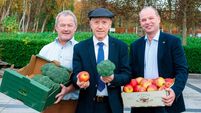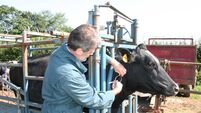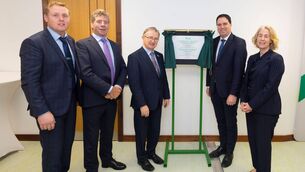Land market is only for the brave
As IFA President John Dillon said, at the time, the Taoiseach's clarification was welcome, because there was enough uncertainty in farming without concerns over a change in the constitutional position of farmland.
In this country, only one in 1,000 acres of farmland is estimated to come on the open market each year.
As a result, some of the best farmers in the country cannot expand, and they have to look instead to investments outside the agri-food sector, which therefore loses out on the full benefits of their efficiency.
When one considers the inflexibility of the land market, and the interference of the CAP in the food market, one wonders how farmers have performed as well as they have, achieving such great strides in productivity over the past 30 years.
Now, there is hope for a new leap forward by farmers, with the distorting effect of CAP subsidisation being withdrawn from the market for farm products, in the CAP Mid-term Review.
These are exciting times for farmers, but it will take some while for things to settle down, after the shock of the mid-term review proposals turned EU farming on its head last year.
The proposals were the first shock for farmers and for the land market; next was the confirmation that farmer subsidisation was to be "frozen" at the rates of the years 2000, 2002 and 2002.
Even after the outline of the Mid-term Review was agreed last June, farmers have to wait until the end of this year for our national decision on how to adapt the new CAP for Ireland, and for a further year before Brussels puts the whole package together, and finally puts it into action on January 1, 2005.
With so much uncertainty, it would be a brave vendor or buyer who would enter the farmland market at these times.
For all they know, partial decoupling may be agreed in October, which would create serious inequities in the value of land.
For example, if the beef slaughter premium was done away with, and the sucker premium retained, the value of a drystock farm could become considerably greater than that of an equivalent suckler farm.
The drystock land would carry the full direct payment, whereas the suckler farm could only be sold with half the direct payments attached, as the remainder would be linked to the individual farmer's herd.
That is just one example of the uncertainties now plaguing the land market.
No one wants to be caught like the farmers who purchased land in 2000, 2001 or 2002 and who have now had to form a national group to fight for the subsidy entitlements which give the purchased land its value.
Our Government could probably have done more to guide farmers through the recent uncertainties.
Instead, it has only added to uncertainties, by raising the question of putting a limit on land prices, and setting up an All-Party Committee on the Constitution to examine this idea.
This will cause even more farmers to pull in their horns and wait for an outcome, before venturing into the land market.
Perhaps the Government should have consulted the experts before this land market intervention. According to the Irish Auctioneers and Valuers Institute, capping the value of land would cause landowners to hold onto land, reducing the supply of building land, and resulting in yet higher house prices.
The effects could be the same for farmland, with even less than the current 0.1% of farmland coming for sale, and the price per acre rising beyond its already inflated level unless the Government clarifies the ever muddier land market picture.










